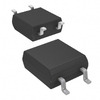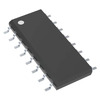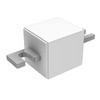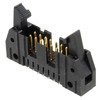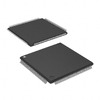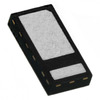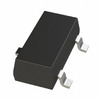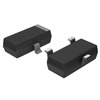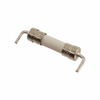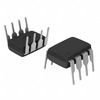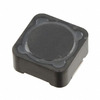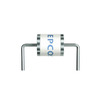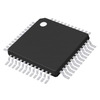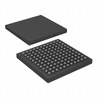BC639 Transistor: Features, Pin Configuration, and Applications
The BC639 transistor is a widely used NPN transistor known for its versatility in switching and amplification tasks. This article explores its key features, including its electrical characteristics, pin configuration, and practical applications in fields like audio amplification, motor control, and power management. We will also cover its working principle, maximum ratings, and possible replacements. Additionally, the article provides a guide on how to use the BC639 transistor effectively, offering tips on proper heat management and ensuring longevity in circuit designs. By the end, you'll have a clear understanding of how to incorporate the BC639 into various electronic projects.Catalog
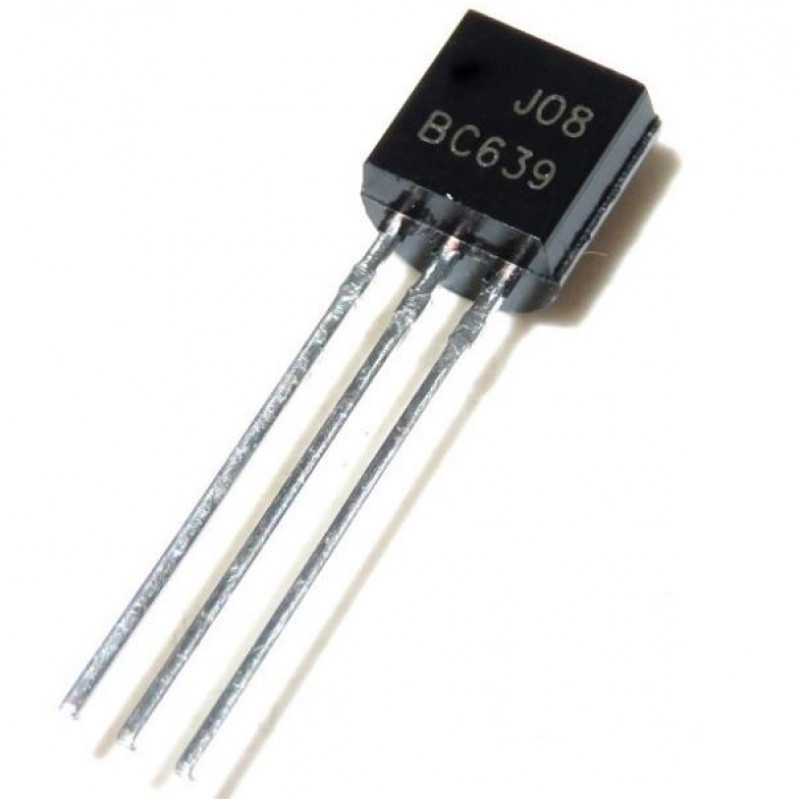
In-Depth Analysis of the BC639 Transistor
The BC639 is a versatile NPN transistor commonly used in electronics. It comes in a TO-92 package and is suitable for medium- and high-voltage tasks like switching and DC-DC conversion. This transistor is also useful in preamplifiers for power and mid-stage amplifiers. With a 100V collector-emitter voltage and the ability to handle a continuous collector current of up to 1A, the BC639 is reliable for various applications. The transistor has a maximum DC gain of 160, which makes it effective for amplifying signals, particularly in audio applications. It can drive small speakers up to 2 inches in size. With a maximum power consumption of 625mW, it handles moderate power levels while still performing well.
Made from silicon, the BC639 is built to work reliably in different conditions. Its through-hole design allows for easy installation and a stable connection, making it well-suited for circuits that require constant current and heat management. The BC639 is commonly used in preamplifiers due to its high gain and current capacity, providing clear and strong signal amplification. It is also a practical choice for compact audio systems where space is limited, and efficient power use is needed.
Replacements and Equivalents
• BC537
• BC639G
• BC639RL1G
• BDB01D
• 2N5832
• 2N4410
• 2SC2036
BC639 Transistor Symbol, Footprint, and Pin Configuration

The BC639 transistor has three main pins: the emitter, collector, and base, each with its own job in making the transistor work properly.
Pin 1: Emitter
The emitter is where the current flows out of the transistor and into the rest of the circuit. In many circuits, this pin is connected to the ground, helping to keep the current steady and the circuit working smoothly. It acts as the exit point for the current.
Pin 2: Collector
The collector is in charge of the main flow of current through the transistor. This pin is usually connected to the load, like a speaker or another device, and controls how much current is used. The base pin helps the collector manage this flow, making the collector useful for tasks like amplifying signals or switching devices on and off.
Pin 3: Base
The base is what controls the current flowing between the collector and the emitter. A small voltage applied to the base allows the current to pass through the transistor. It acts like a gate, controlling when and how much current flows, which makes it helpful for turning circuits on or off or for boosting weak signals.
Technical Parameters of BC639 Transistor
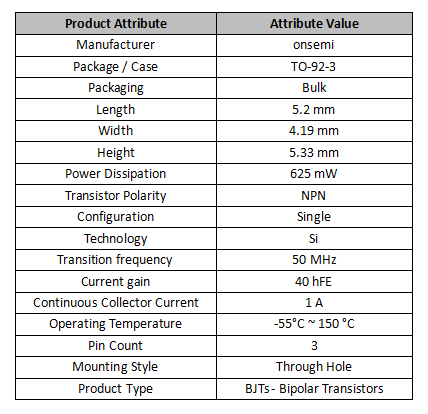
Characteristics of BC639 Transistor
The BC639 transistor is known for its ability to perform well in a variety of tasks. It can handle high currents and has a DC amplification factor between 40 and 160, which makes it suitable for both switching and amplification. It also has a maximum collector dissipation of 625mW, allowing it to work effectively in different conditions.
High-Current Capacity and Amplification
The BC639 transistor can efficiently manage current in both low-power and high-power applications. This feature is particularly useful in audio amplifiers, where it helps maintain good signal quality while using power efficiently. It works well in systems where both accuracy and power are needed.
Practical Applications in Audio Engineering
In audio amplifier stages, the BC639 provides a maximum DC current gain of 160, which helps it amplify even small input signals. This ability makes it useful for driving low-power speakers and producing clear sound. Its performance is appreciated in both DIY audio projects and professional audio systems, showing that it can be reliable in different settings.
Voltage Control Capabilities
The BC639 can also manage higher voltage loads, with a collector-emitter and collector-base voltage rating of up to 80V. This makes it a good choice for circuits that require precise control of higher voltages, such as power supplies and motor controllers. It ensures smooth performance in devices that need accurate voltage control.
Robustness in Practical Scenarios
The transistor's durability is shown by its ability to dissipate up to 625mW of power. This makes it reliable even in tough conditions where components are used frequently or face changing environmental factors. In industrial settings, the BC639’s reliability helps equipment last longer and work more steadily.
Working Principle of BC639 Transistor
The BC639 transistor works by controlling the flow of current between the base, emitter, and collector. When a positive voltage is applied between the base and emitter, it increases the base current. This increase prompts the emitter to release more electrons, which in turn allows more current to flow from the collector to the emitter. As the base current increases, the collector current also rises, making the transistor an effective amplifier.
The relationship between the base current and the collector current allows the transistor to amplify even small signals. A small change in the base current can cause a large change in the current flowing through the collector and emitter, which is useful in circuits that require amplification, such as audio systems. The transistor controls current flow by adjusting the base voltage, allowing precise regulation of the current from the collector to the emitter. This ability to control and amplify current makes the BC639 a common choice for switching and amplification tasks in various circuits.
Maximum Ratings of BC639 Transistor
The BC639 transistor has specific maximum ratings that should not be exceeded to ensure proper functioning and prevent damage to the device
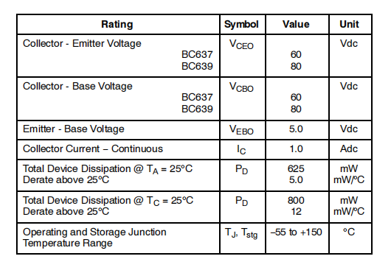
Exceeding these limits can result in overheating or failure of the transistor. Always operate within the recommended limits to maintain the reliability and longevity of the BC639 in your circuit designs.
Applications of BC639 Transistor
The BC639 transistor is widely used in various circuits due to its ability to handle different functions effectively.
Sensor Circuit
The BC639 is often used in sensor circuits, such as temperature, displacement, and pressure sensors. It helps these sensors convert physical data into electrical signals for real-time monitoring. This transistor is chosen for its reliability and flexibility, working well in different environmental conditions to keep the sensors functioning consistently.
Power Management
The BC639 plays a role in power management systems by regulating battery charging and discharging processes, ensuring batteries work efficiently and last longer. This makes it useful in devices like portable electronics and monitoring equipment. The BC639’s steady performance makes it a good choice for designing circuits that save energy and distribute power effectively.
Signal Amplification
The BC639 is commonly used for amplifying weak electrical signals. This is especially useful in audio and radio applications, where stronger signals are needed to drive devices like speakers. By boosting low-level signals, the BC639 ensures clear sound transmission, making it a reliable component in both commercial and consumer electronics.
Motor Drive
In motor control systems, the BC639 helps control the speed and direction of motors. It adjusts the current flow, allowing precise control of motor performance. This is often seen in industrial machinery, robotic systems, and household appliances, where smooth and reliable motor operation is required.
Wireless Communication
The BC639 is also used in wireless communication devices, such as Bluetooth and Wi-Fi modules. It helps process and transmit signals, keeping communication steady and efficient. This transistor is particularly effective in the radio frequency (RF) stages of these systems, ensuring smooth data transmission in high-frequency applications.
Power Switch
The BC639 functions as a power switch in various circuits, allowing easy control of power supply conduction and shutdown. It is often used in power adapters, LED drivers, and power management systems for CPUs. This transistor ensures that power is safely managed, preventing damage to devices and keeping systems running smoothly.
Audio Amplification
The BC639 is highly effective in audio amplification circuits. It boosts low audio signals in devices like speakers and headphones, providing clear and loud sound output. This makes it a great choice for sound systems in both professional and consumer electronics, improving the overall audio experience.
Relay Drive
In automatic control systems, the BC639 is used to drive relays that manage the operation of AC motors or other high-power devices. By controlling relays, it helps circuits handle more power than they could on their own. This makes the BC639 a dependable choice for industrial automation and smart home systems, where precise control of electrical loads is needed.
BC639 Transistor Usage Guide
To keep the BC639 transistor functioning properly, it's important to store and operate it in the right conditions. Factors like temperature and humidity can affect how long electronic components last and how well they perform. Storing components in a dry, controlled environment helps extend their lifespan and prevent unexpected issues.
When using the BC639 in a circuit, it's necessary to choose the right specifications for your specific needs. Factors such as power dissipation, collector current, and voltage ratings must match the requirements of your circuit. For example, if the transistor is being used for audio amplification, you'll need to focus on minimizing noise and ensuring the signal stays clear.
It's also important to consider how much power the BC639 will need to handle. Power dissipation is a key factor, as the transistor can overheat if it has to manage more power than it's rated for. Adding thermal pads or other heat-conductive materials can help manage heat and keep the transistor from getting too hot. This is particularly useful in systems like industrial machines, where components need to run for long periods without problems.
Next, make sure the collector current and voltage stay within the transistor’s limits. Exceeding these values could damage the transistor or cause the circuit to fail, especially in systems where the load can change quickly, like motor control circuits. Planning for these changes in current and voltage helps prevent malfunctions.
Correctly connecting the BC639’s pins is also crucial. Refer to the datasheet to ensure the pins are wired correctly, as incorrect wiring can lead to failure or poor performance. Labeling and double-checking connections during assembly can prevent mistakes, especially in fields where reliability is a must, such as aerospace electronics.
Lastly, managing heat is critical. Use appropriate heat sinks and place them carefully to ensure the transistor stays cool, especially in high-power situations. Using thermally conductive paste can further improve heat transfer. Experience from areas like high-performance computing shows that effective heat management can extend the life of electronic components and improve their overall performance.
Frequently Asked Questions [FAQ]
1. What is the BC639 transistor?
The BC639 is an NPN bipolar junction transistor (BJT) commonly used for switching and amplification in various electronic circuits. It is known for its reliability and is suitable for many different applications. Over time, transistors like the BC639 have been improved to offer better durability and performance.
2. What is the type of package for this BC639 transistor?
The BC639 comes in a TO-92 package, which is popular for its small size and ease of integration into circuit boards. This package features a collector-emitter voltage (VCE) of 100V and a collector current of 1A. The TO-92 package is widely used in mid-power applications, offering a good balance of cost and performance.
3. What is the replacement and equivalent of the BC639 transistor?
Several transistors can replace the BC639, including the BC537, BC639G, BC639RL1G, BDB01D, 2N5832, 2N4410, and 2SC2036. When selecting a replacement, it's important to check the voltage, current ratings, and whether the package is compatible with your circuit. You may also need to consider specific requirements, such as switching speed or temperature stability.
4. What is the maximum current of the BC639?
The BC639 can handle a maximum current of 1.5A, with a gain range between 40 and 160. This makes it suitable for moderate to high voltage applications. For the best performance, it’s recommended to ensure proper heat management to prolong the lifespan and reliability of the circuits that use this transistor.
About us
ALLELCO LIMITED
Read more
Quick inquiry
Please send an inquiry, we will respond immediately.

STM32F103RCT6 Microcontroller: Alternatives, Pinout, and Strengths
on September 27th
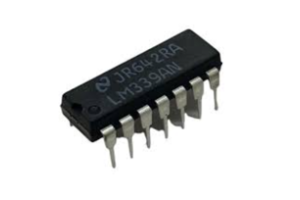
Guide to the LM339AN Quad Voltage Comparator
on September 27th
Popular Posts
-

What is GND in the circuit?
on January 1th 3132
-

RJ-45 Connector Guide: RJ-45 Connector Color Codes, Wiring Schemes, R-J45 Applications, RJ-45 Datasheets
on January 1th 2681
-

Understanding Power Supply Voltages in Electronics VCC, VDD, VEE, VSS, and GND
on November 15th 2244
-

Fiber Connector Types: SC Vs LC And LC Vs MTP
on January 1th 2189
-

Comparison Between DB9 and RS232
on January 1th 1804
-

What Is An LR44 Battery?
Electricity, that ubiquitous force, quietly permeates every aspect of our daily lives, from trivial gadgets to life-threatening medical equipment, it plays a silent role. However, truly grasping this energy, especially how to store and efficiently output it, is no easy task. It is against this background that this article will focus on a type of coin cell battery that may seem insignificant on the...on January 1th 1780
-

Understanding the Fundamentals:Inductance Resistance, andCapacitance
In the intricate dance of electrical engineering, a trio of fundamental elements takes center stage: inductance, resistance, and capacitance. Each bears unique traits that dictate the dynamic rhythms of electronic circuits. Here, we embark on a journey to decipher the complexities of these components, to uncover their distinct roles and practical uses within the vast electrical orchestra. Inductan...on January 1th 1732
-

CR2430 Battery Comprehensive Guide: Specifications, Applications and Comparison to CR2032 Batteries
What is CR2430 battery ?Benefits of CR2430 BatteriesNormCR2430 Battery ApplicationsCR2430 EquivalentCR2430 VS CR2032Battery CR2430 SizeWhat to look for when buying the CR2430 and equivalentsData Sheet PDFFrequently Asked Questions Batteries are the heart of small electronic devices. Among the many types available, coin cells play a crucial role, commonly found in calculators, remote controls, and ...on January 1th 1683
-

What Is RF and Why Do We Use It?
Radio Frequency (RF) technology is a key part of modern wireless communication, enabling data transmission over long distances without physical connections. This article delves into the basics of RF, explaining how electromagnetic radiation (EMR) makes RF communication possible. We will explore the principles of EMR, the creation and control of RF signals, and their wide-ranging uses. The article ...on January 1th 1681
-

Comprehensive guide to hFE in transistors
Transistors are crucial components in modern electronic devices, enabling signal amplification and control. This article delves into the knowledge surrounding hFE, including how to select a transistor's hFE value, how to find hFE, and the gain of different types of transistors. Through our exploration of hFE, we gain a deeper understanding of how transistors work and their role in electronic circu...on November 15th 1642
